The incredible rise and success of developer-first companies like Stripe have proven the power of community led-growth. However, while crucial, community building continues to be complex, manual and time-consuming work. In particular, the developer community tech stack is fragmented, with organizations stuck managing endless platforms (including Github, Discord, Twitter, Reddit, etc.) and working with incomplete data. Moreover, traditional sales and marketing don’t work for companies targeting developers. They often rely on thriving developer communities to adopt their products and grow.
In parallel, developers have increased decision and buying power when it comes to the technologies their companies use. For obvious reasons, they prefer rich and authentic exchanges within like-minded peer groups to inform their usage and purchase decisions.
We are excited to back crowd.dev, an open-source community-led growth platform improving how developer-first businesses harness online communities. Founded in 2021 by Jonathan Reimer (CEO) and Joan Reyero (CTO), the Berlin-based company offers a suite of tools to analyze, grow, and leverage online communities to drive business results.
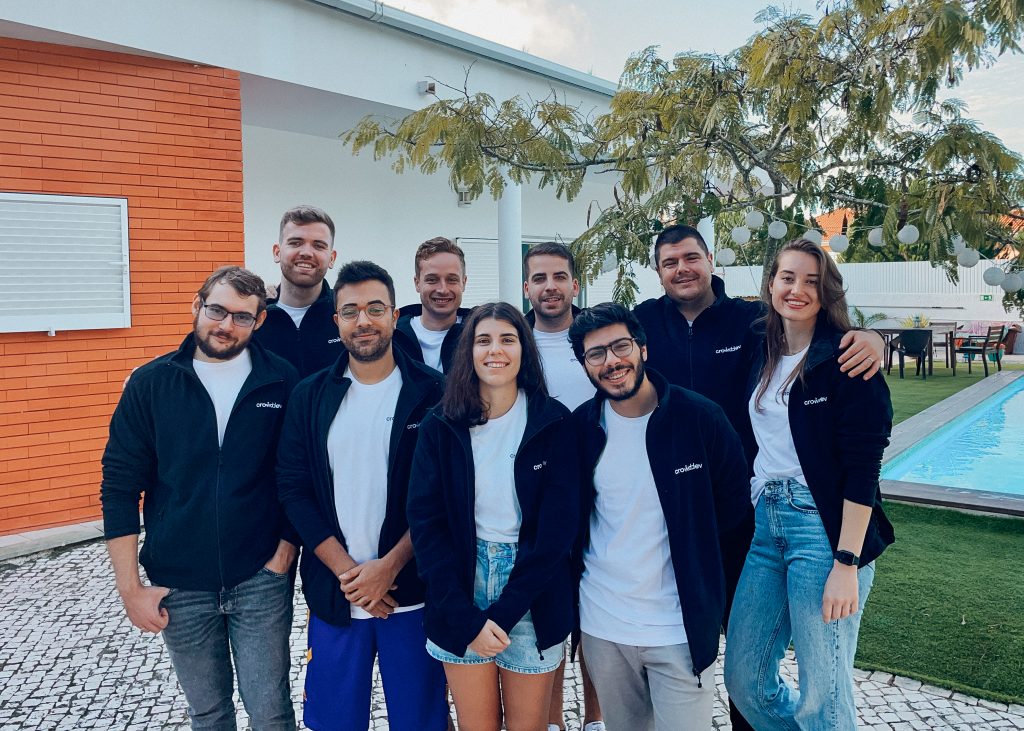
The team believes that the way to developers’ hearts and minds (and ultimately their companies’ budgets) is through authentic community interactions. In other words, developer-first businesses need communities as a growth channel. Jonathan, who previously built communities in the open-source space, experienced firsthand the difficulties involved, with no existing tools that supported the integrations and features he needed.
Created with the belief that the future of business relies on thriving communities – particularly in the fast-growing open-source space, crowd.dev is the very first open-source developer community tool on the market. In addition to common reasons, like data privacy, customizability, and code longevity, the decision to go open-source was driven by creating a community where developers come together to build out the software for different use cases. The applications for community-led software are endless, from customer service tools that recognize unsolved issues on community platforms to recruiting software that considers community contributions.
Jonathan Reimer emphasizes: “Community-led growth has been a topic for every developer-focussed company we talked to. We built crowd.dev with the vision to help companies find, engage, support, and collaborate with the right developers, to ultimately help them reach their growth goals through a vibrant community. Our open-source approach means customers can own their data and, more importantly, it enables us to build a thriving, open community of developers and companies around crowd.dev.”
crowd.dev users can choose between a self-hosted or hosted version. The platform is also open to extensions and provides users complete control over their community’s data. Furthermore, it aggregates data across developer communities and provides analytics, workflow automations, and insights to fuel growth.
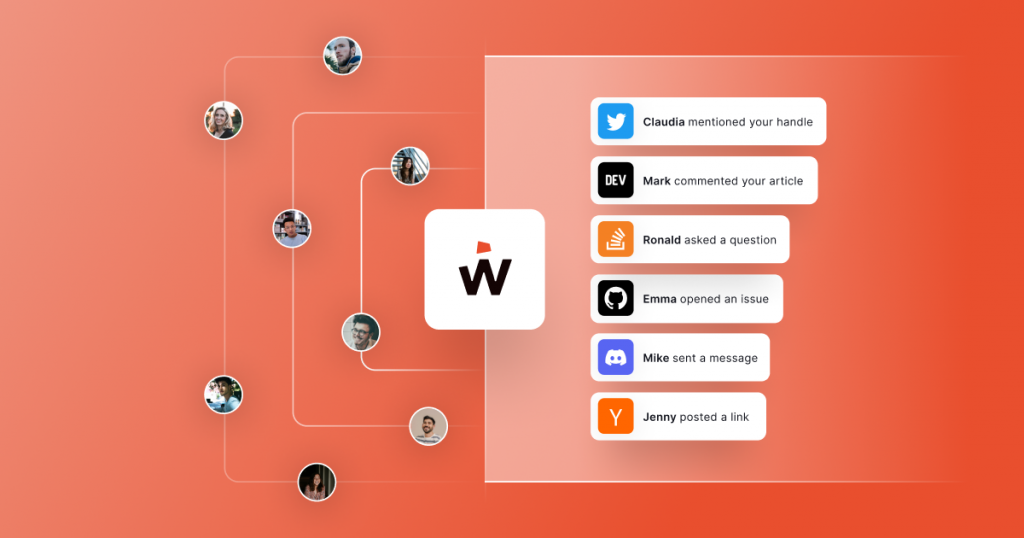
Premium tools are available modularly and can be selected depending on each user’s unique requirements. If a user is looking to grow their community, the Eagle Eye app allows them to find and engage with the right content across channels like Hacker News and DEV. If companies wish to improve their support content and search ranking, crowd.dev’s Community Help Center App automatically publishes landing pages with community-generated support content discoverable by search engines.
Since March 2022, several hundred organizations have joined the company’s beta, including the likes of Microsoft, Meilisearch, Code Intelligence, ZenML, Distributed, and the Linux Foundation.
On why we invested, our Venture Partner, Devin Hunt, comments:
“We at Seedcamp have backed many developer-first companies, and we have seen firsthand how important community building is to their long-term growth. crowd.dev’s tools give a startup all they need to hit the ground running. Their open-source, developer-first approach is a game changer for any business whose developer community is critical to their success.”
We are excited to co-lead crowd.dev’s €2.2 million pre-seed round alongside Lightbird, with participation from Possible Ventures, Angel Invest, NevrSeen, and notable angel investors, including Russ Heddleston, Cedric Sellin, Christian Stiebner, and Matthäus Krzykowski. The fresh funds will go towards strengthening the core community, extending the product, adding more applications and data integrations, as well as making it generally available to the public.
For more information visit crowd.dev.
Today also marks the release of their open-source offering, so make sure you check out crowd.dev/github.
Existing retail investment solutions, including robo-advisors, don’t serve customers’ long-term financial needs and goals. Investors are on a constant rollercoaster of emotional and counterproductive decision-making around stock picking or buying cryptocurrencies. Specifically for Millenials – the first post-war generation not to earn more than their parents by the time they reach their 30s – the path to building wealth is less clear than for previous generations.
This is why we are excited to back Sidekick, a digital active investment manager built for today’s rapidly changing world. Founded by serial entrepreneur Matthew Ford (CEO) and Peter Townsend (CTO), the UK-based company is on a mission to democratise the wealth-building products and opportunities currently only available to High-Net-Worth individuals, rethinking and restructuring products for a retail customer, starting with actively managed baskets of public equities and crypto, and a portfolio line of credit.
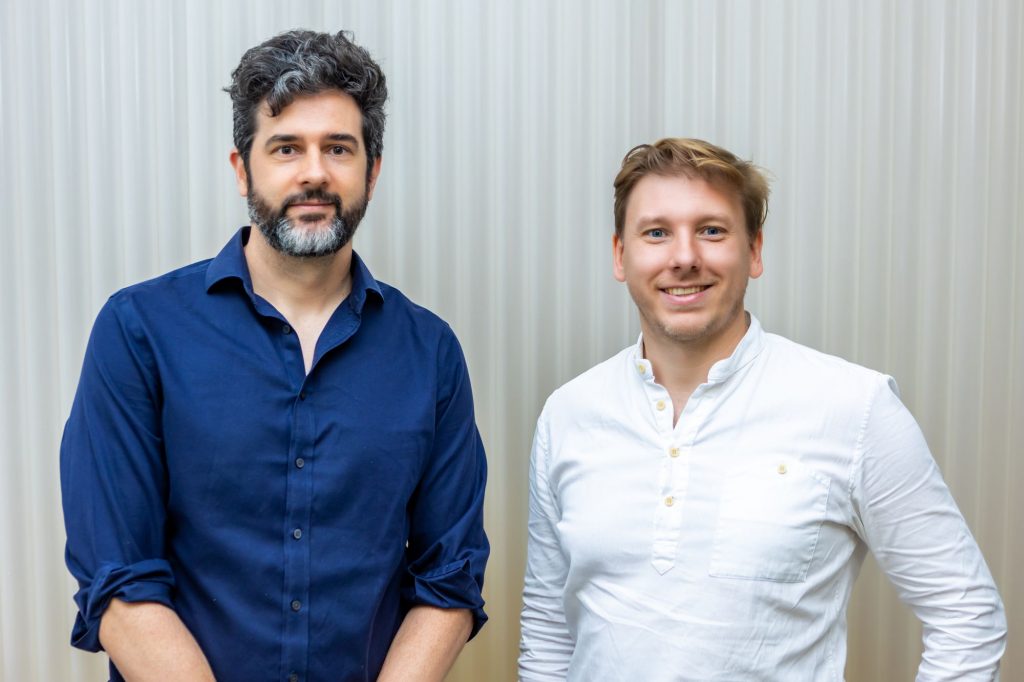
Started by a highly-experienced founding team with traditional asset management, consumer credit and fintech backgrounds, Sidekick provides retail investors access to a dedicated investment team who will provide regular updates on portfolio performance and share high-quality editorial content to help customers build their investment knowledge along the way.
“Most retail investors have two options to build wealth: settle for passive portfolios or they can try to time the market and pick stocks and crypto themselves without access to the training, tools and information needed to do this effectively. This funding will allow us to build a modern app-based investment service that gives customers the same professional expertise that only high-net-worth individuals are used to. We’ve already got a stellar team in place, and we’re now excited to be working towards regulatory approval to launch over the coming months,” highlights Matthew Ford, CEO and Co-Founder of Sidekick, and also an experienced fintech entrepreneur and investor.
On why we invested in Sidekick, our Partner Tom Wilson comments:
“Matt and Pete have a huge amount of fintech startup experience from their time founding Pariti and working on the exec team at Tandem. Matt’s even experienced the dark side with his time as a Fintech focused VC at Mouro Capital where we had the privilege of co-investing in Uncapped. All this to say, they’re the perfect team to be going after this opportunity. We believe there’s a massive business here to democratise access to financial products and help close the generational wealth gap”.
We are excited to participate in Sidekick’s £3.33M pre-seed round led by Octopus Ventures and joined by Semantic Ventures and prominent angel investors, including Will Neale, founder of Grabyo, Michael Pennington, co-founder of Gumtree, Ricky Knox, co-founder of Tandem, Michael Kent, co-founder of Azimo, Freddy Kelly, co-founder of Credit Kudos, and Mark Ransford, a serial FinTech investor. The fresh funding will support Sidekick’s journey towards becoming a regulated active investment manager that offers access to portfolios of both traditional and digital assets.
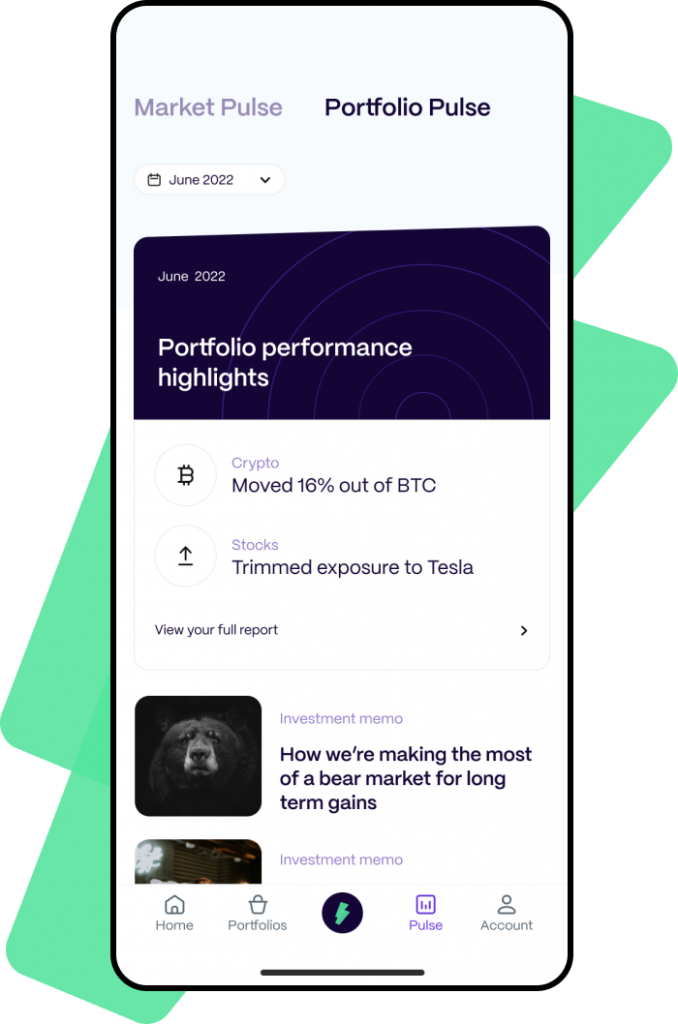
The team plans to build out the app-based product, expand the in-house asset management team, secure the required regulatory permissions and registrations to offer an innovative product mix including both stocks and crypto, and construct a responsible funding line for customers to borrow against their portfolios when needed. Sidekick has applied to the FCA for the relevant regulatory permissions and registrations and hope to launch upon authorisation in 2023.
For more information and to join the waitlist, visit sidekickmoney.com.
In 2007, Chris Wanstrath and PJ Hyett were sitting in a small SF apartment, building websites for CNET on Ruby on Rails. The more they used Rails, the more suggestions they had for improving the open-source project. But as was the industry norm back then, the open-source initiative was managed by a group of trusted coders who had explicit permission to commit changes. Anyone wanting to contribute to the central code had to go through them. Over time, Chris and PJ felt that they were spending more time lobbying for the change than actually identifying and coding the change. Fed up with the process, they decided to build their own repository: Logical Awesome LLC.
Logical Awesome turned into GitHub, and today, more than 83M developers use it daily to build and collaborate. GitHub made coding a team sport. It changed the way coders build and collaborate with one another.
One year later, two Facebook engineers had a mission to kill email at work. Dustin Moskovitz and Justin Rosenstein quit their jobs, and Asana was born to help anyone within a company communicate and collaborate more efficiently. In the following years, Miro and Trello were built to communicate ideas and manage projects in real time. Figma and Notion quickly followed, changing the way people design and manage knowledge.
Github revolutionised an industry by enabling more collaboration, albeit on an asynchronous basis. While Github was pushing for this foundational shift to happen, Asana, Miro, Trello, and Figma began applying synchronous multiplayer features to product ideas. They became category-defining companies that paved the way for the first wave of real-time collaborative software. They built real-time multiplayer features at the core of their offering, which differentiated them from incumbents. And even though we’d argue that Figma and Miro’s collaborative features are nowadays an enhancer rather than the main value driver of the software, multiplayer features are what drove their initial development and adoption.
Today, we aren’t trying to convince ourselves of the need for collaboration within the workplace. A COVID-induced shift to hybrid work, the consumerisation of B2B SaaS, and a familiarity with the first wave of collaborative software have opened the floodgates for more multiplayer products. We’re now seeing a shift in collaborative tech being baked into products beyond design and productivity. We call this shift from collaboration as a product to collaboration as a feature the second wave of collaborative tech. Companies that haven’t traditionally thought of themselves as collaboration-first are now deciding to adopt multiplayer features on the application layer to improve their product’s user experience and build virality into their business (much more on this here). Supply chain, tax, and even life sciences are seeking to give their customers a more frictionless, data-centric, and integrated experience, whether their users are sitting next to each other or oceans apart.
At Seedcamp, we are excited by the impact collaborative tech is having on dozens of verticals, for companies small and large. Below we highlight a few companies which we have backed and/or admire, all using multiplayer collaborative tech to enhance their products.
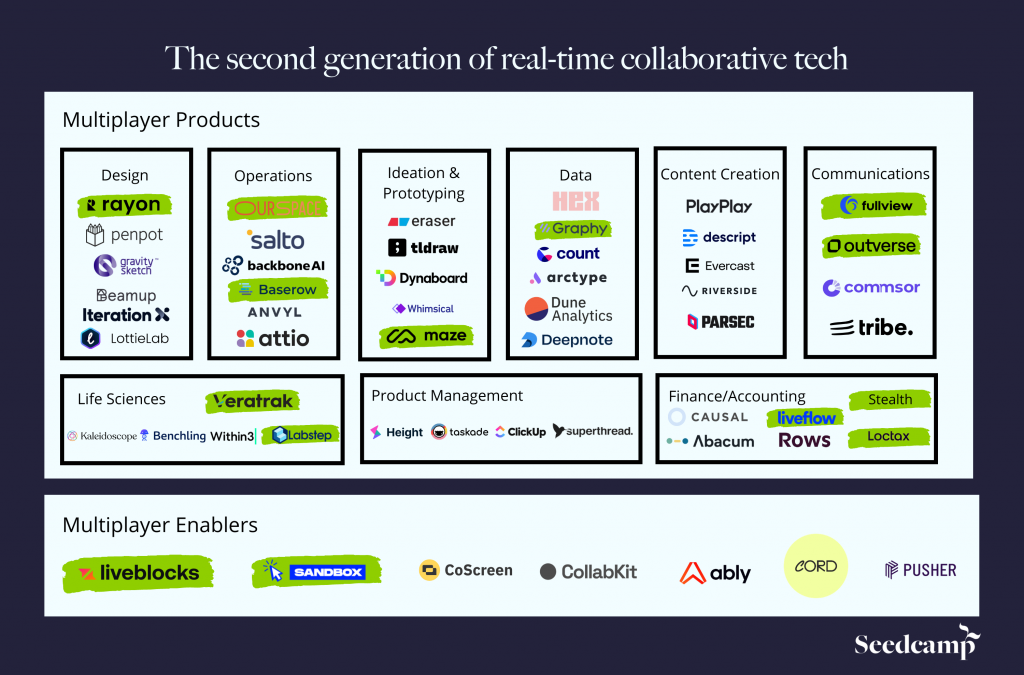
In the data space, Count is helping business users and data teams communicate in real-time. Hex and Benchling are making notebooks for data and life sciences multiplayer. Evercast is changing the way teams collaborate on video production. We’ve been fortunate enough to partner with a number of multiplayer collaborative SaaS across multiple sectors from finance to data and communications (portfolio companies highlighted in green). Rayon is rethinking the design, exchange, and communication process for spatial design companies that have traditionally used a combination of BIM, PDFs, and email to model and communicate with stakeholders. Ourspace equips teams with a canvas to make better org design decisions and Fullview enables virtual support teams to give better customer service.
In addition to vertical-specific solutions, infrastructure plays have also cropped up as part of the second wave of collaboration. We call these multiplayer enablers. They provide the necessary tooling to turn something that was traditionally single-player into a multiplayer collaborative experience. One example of a multiplayer enabler is our portfolio company Sandbox. Jonathan Bree, the founder and CEO, built Sandbox with the belief that the internet is a multiplayer space and merits a multiplayer browser. Via Sandbox, users can quickly turn a web browsing experience into a multiplayer event. Currently, in beta, the Seedcamp team already loves using the Chrome extension for Amazon browsing pipeline and portfolio review meetings.
Another example from our portfolio is Liveblocks. Instead of making browsers collaborative, Liveblocks enables developers to build real-time collaborative features on top of existing and new-developed SaaS applications. Liveblocks is made up of two layers: a “presence” layer which, via live cursors and avatars, creates a multiplayer experience, and a “storage” layer which lets users manipulate the same piece of data in real-time and synchronise their application state without any lag. Neatly packaged into an easily-integratable API, Liveblocks is already used by dozens of companies.
Recently, we sat down with Steven Fabre, the co-founder and CEO of Liveblocks, to chat about his take on the future of collaborative multiplayer SaaS.
The beauty of Liveblocks is its ease of integration which enables a variety of people, from construction to healthcare professionals, to take advantage of the benefits of real-time collaborative SaaS. Propeller and Dialogue, which Steven touches upon during the interview, would likely not have prioritised multiplayer features if it weren’t for Liveblocks’ ease of use. We believe that infrastructure solutions like Liveblocks will pave the way for many more tools to integrate multiplayer features that enhance user experience.
“I think the future of SaaS is going be collaborative. It’s gonna become a commodity. If your product isn’t multiplayer, if it doesn’t work in the browser where you can easily share your URL with somebody, and that person ends up in the same space as you, your competitor will do it and win.” Steven Fabre, CEO at Liveblocks
Of course, when incorrectly fitted to a use case, multiplayer collaborative SaaS can create a less-than-ideal outcome. It can lead to groupthink and distraction. We likely couldn’t have written this article if three other avatars on our screens were moving words around and converging upon the same thought. Similarly, a coder might struggle if their teammate changes the source code on line 9 that breaks lines 20-40. Solo focus will always be valuable and some professions (and personalities) require more of it than others. Multiplayer features will have to be modular in order to cater to these use cases.
At Seedcamp, we believe that multiplayer, real-time collaboration will continue to be universally embedded into products. We are looking particularly closely at multiplayer collaborative SaaS that is: i) serving fragmented industries with many involved stakeholders, and ii) competing against legacy software (more on why it’s nearly impossible to turn legacy software multiplayer here).
We are witnessing some exciting developments in industries that have traditionally been left out of massive tech transformations. Many of these industries struggle with high fragmentation and a variety of stakeholders who own siloed parts of the value creation process, causing a headache to anyone who has to manage them. Multiplayer collaborative SaaS could be an answer to many of these issues. We backed Loc.tax because we realised how siloed and Excel/PDF-dependent global tax teams are. More multiplayer software serving categories like shipping, construction, FMCG, and legacy B2B marketplaces can massively disrupt the way stakeholders communicate today.
If you’re working on something interesting within the multiplayer collaborative space, we’d love to hear from you! Share what you’re building here or email directly at kate@seedcamp.com. If you’re looking for opportunities to work in this exciting space, feel free to check out our portfolio job board here.
Seedcamp’s Collaborative SaaS Footprint (so far…)
Team is everything when it comes to the success of high-growth tech companies. We’ve seen first-hand examples where companies have failed because they didn’t find the right people-problem fit. Moreover, tech companies experience the second-highest turnover rates of all industries, an expensive and destabilizing problem for senior leaders to tackle.
This is why we are excited to back Ourspace, a collaborative team design platform that offers a scalable and data-enriched solution to help leaders make smarter organization design decisions.
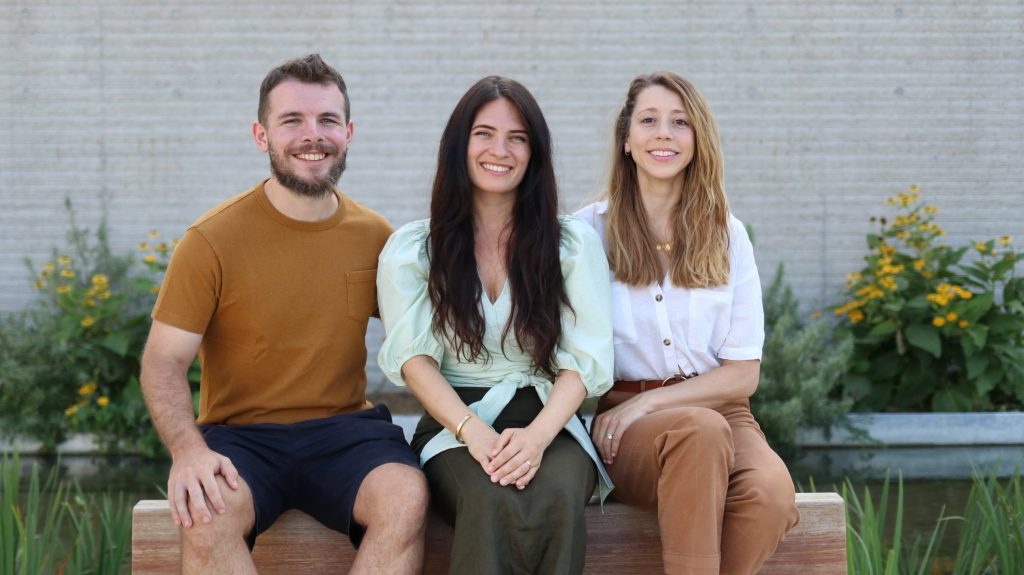
Founded earlier this year by three tech veterans, Megan Murphy (former VP of Product at Hotjar), Stephanie Bowker (former VP of Marketing at Spendesk) and Mark Allen (former Senior Engineering Manager at Glovo) – who bonded over their shared challenges to proactively restructure and align their teams at scale with no solution to design their organizations through a people-centric and business outcome lens – Ourspace operates fully remote out of Barcelona, Paris, London & Munich.
“Tech leaders today face a big problem: they have talented people on their teams, but how they should be distributed and how to keep them engaged and aligned is currently a manual, biased and costly decision process,” highlights co-founder and CEO, Megan Murphy.
“With the stakes so high, we ask ourselves, why are there 20+ products to design fantasy sports teams in a matter of minutes, yet most companies – whose businesses are built by teams – have nothing even remotely that effective to offer their leaders and teams?” Murphy questions.
Ourspace offers tech leaders a data-rich canvas to visually brainstorm and weigh tradeoffs of re-arranging people, teams and ownership areas with smart permissions and views. The platform’s use cases include:
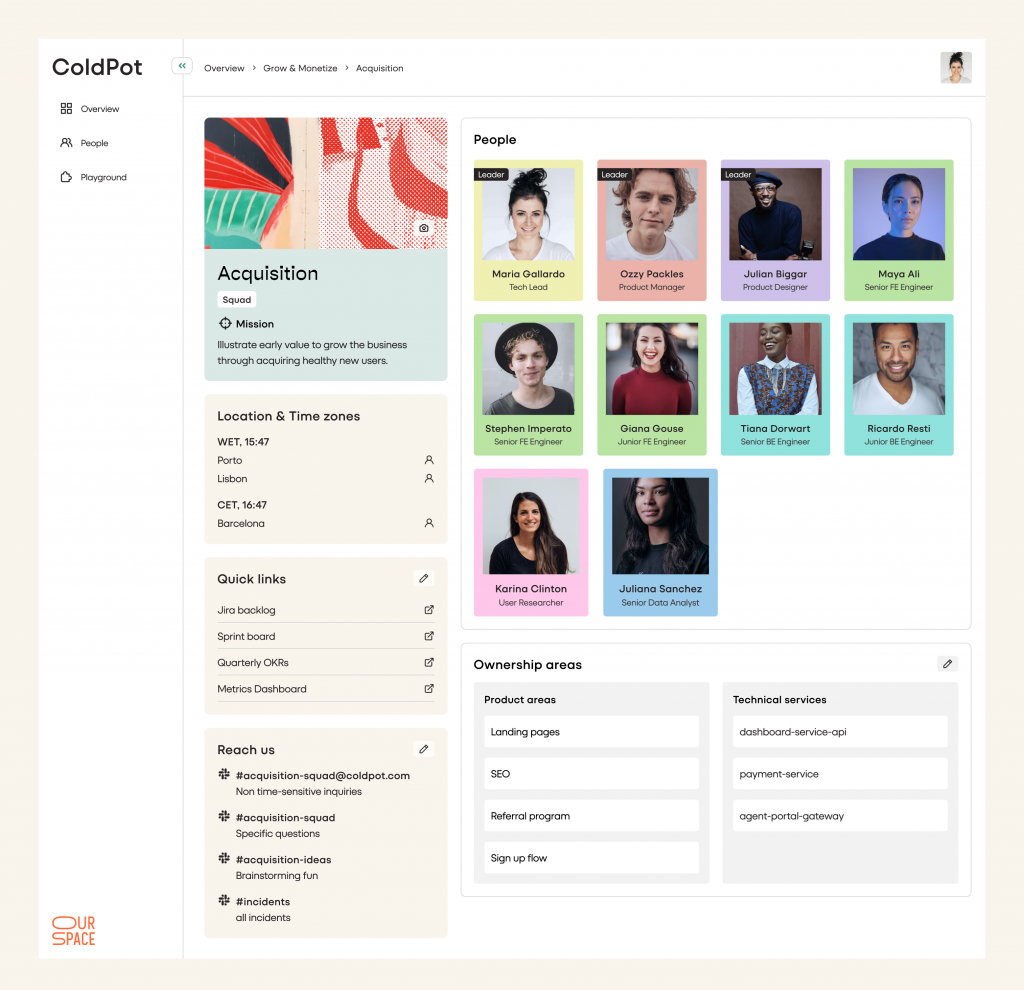
“In my conversations with more than 60 tech leaders, the ‘OMG managing my people/product/tech stack puzzle is a nightmare’ prevailed. CPOs, Heads of Engineering and Growth leaders from startups to scaleups currently tape together at least 3 different sources of documentation which are usually out-of-date and out-of-sync with the HR team. This gives leaders the option of either foregoing data-backed team decisions or spending hours every week to maintain this essential data”, adds Murphy.
Dave Thomson, VP of Product at Stuart, a 1,200-person logistics scaleup headquartered in Paris, and an Ourspace early-adopter, comments: “At Stuart, we face the problem of working in silos when mapping squads to projects and across team ownership. Ourspace gives managers a safe space to collaborate with their peers to co-build staffing scenarios with contextual skills, interests and company goals in one centralized place.”
Ourspace provides the entire company with an easy-to-navigate source of truth with visibility into tasks, goals, reporting structure, and how to work with them. “We’re building our product to reflect our values and the values of our customers,” says Mark Allen, co-founder and CTO, “with transparency and collaboration built in as defaults.”
Stephanie Bowker, co-founder and CMO, emphasizes: “Ultimately, we’re not just looking to help leaders fill seats but to empower them to strategically, intentionally and inclusively build teams that reflect the diverse people they serve.”
On why we invested, Felix Martinez from our investment team comments:
“Product-market fit is important, but equally important is people-problem fit. We know how important teams are to the success of a company, and we’ve seen examples where companies have failed because they didn’t manage to find the right people-problem fit. Ourspace is not only tackling the problem with the right product, but they have the right people tackling the solution. We’re thrilled to be backing Megan, Steph and Mark.”
We are excited to join Ourspace’s $2.5M pre-seed round led by Connect Ventures, with participation from prominent angel investors, including Jo Widawski, founder of Seedcamp-backed Maze, as well as the founders of Grabyo and Skew by Coinbase. The fresh funds will be used to accelerate product development and customer discovery.
Ourspace is now live on Product Hunt. Upvote!
For more information and to join the waitlist, visit our.space and follow them on Twitter and LinkedIn.
An interview with Jonathan Widawski, Co-founder and CEO of Maze, and Devin Hunt, Venture Partner at Seedcamp.
We’re excited to introduce Seedcamp Firsts, the definitive guide to the all-important first steps in company building brought to you through first-hand experiences and lessons learned from the brightest minds across the Seedcamp Nation.
The power of the Seedcamp Nation comes from the incredible breadth of experience that’s been lived across it. We want to open up this hard-won knowledge and insights from the exceptional founders we’ve backed to our mentors, Experts in Residence, Venture partners, and our core team. Our ultimate goal with Seedcamp Firsts is to help support the next generation of exceptional entrepreneurs navigate those critical first steps in building a business.
We’re thrilled to kick off our Seedcamp Firsts series with Jonathan Widawski, co-founder and CEO of Maze, a Seedcamp-backed growth-stage company on a mission to democratize product research. In this piece, we will explore everything from prioritising what to build, and when, to how to evaluate customer input in product development decisions.
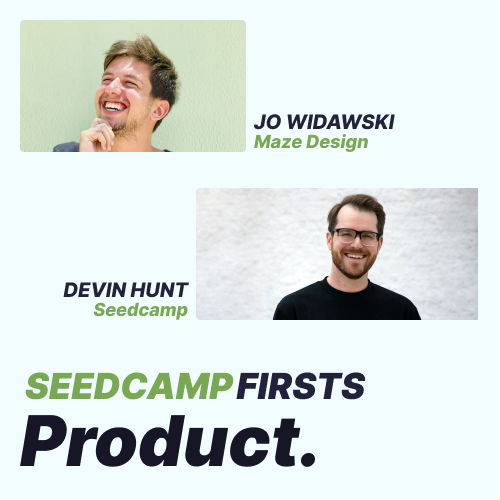
The founding story of Maze
While building their previous startup, a messaging app for gamers called Ping, Jonathan, and his co-founder Thomas Mary, stumbled upon a ground-breaking idea. In Jonathan’s own words:
“The reality was we didn’t have a product yet. What we had at the time was this very in-depth InVision prototype of what we wanted to create. And so we thought, how do we get insights in our value proposition, which flows are working, which design is performing better, before actually having to build a thing and not having to interview 12,000 people.” – Jonathan Widawski
They hacked together a solution by adding an analytics layer to an InVision prototype. This would become the prototype for Maze.
Their instant revelation: “We could collect quantitative data that we would be able to collect post-development at a pre-development stage.” Discovering a treasure flow of available data made them realize that using this method would enable them to iterate without having to spend money on building.
“What we did at the time was we built the first version in a couple of months. It was really basic. It was bare bone. We were manually creating the heat maps, like all of these things that it had no bells and whistles.” – Jonathan Widawski
Jonathan returned to his job as a lead UX designer and convinced his clients to test their prototypes with the Maze tool. Even though they were generally reluctant to do customer research, they accepted, giving the Maze team access to some of their customers. Finding great value in the results of the prototype tests, the clients provided Jonathan and Thomas with proof that they were on the right track with what they were building.
“Especially when you are successful in selling a process that you’ve been unsuccessful selling for this type of customers for years, and especially when they automatically attach it to a return on investment, when they can attach a budget value to it, to me it was a great sign that yes, the stars are aligning. There is a product that we built that is bringing value that we can then attach to a budget within the organization. And all of this means that if we can replicate this a hundred thousand times, we have an actual business. This is the type of signal that you’re looking for.” – Jonathan Widawski
Jonathan and Thomas started building Maze in 2018 to democratize product research everywhere. Their initial goal was to make research – traditionally limited to the largest enterprises – happen everywhere, in companies of all sizes, including startups, and in all industries.
Their vision evolved into enabling research to transcend the researchers’ role, becoming a tool that the whole organization would use. The founders applied this principle in building Maze, ensuring everyone was involved in the research journey.
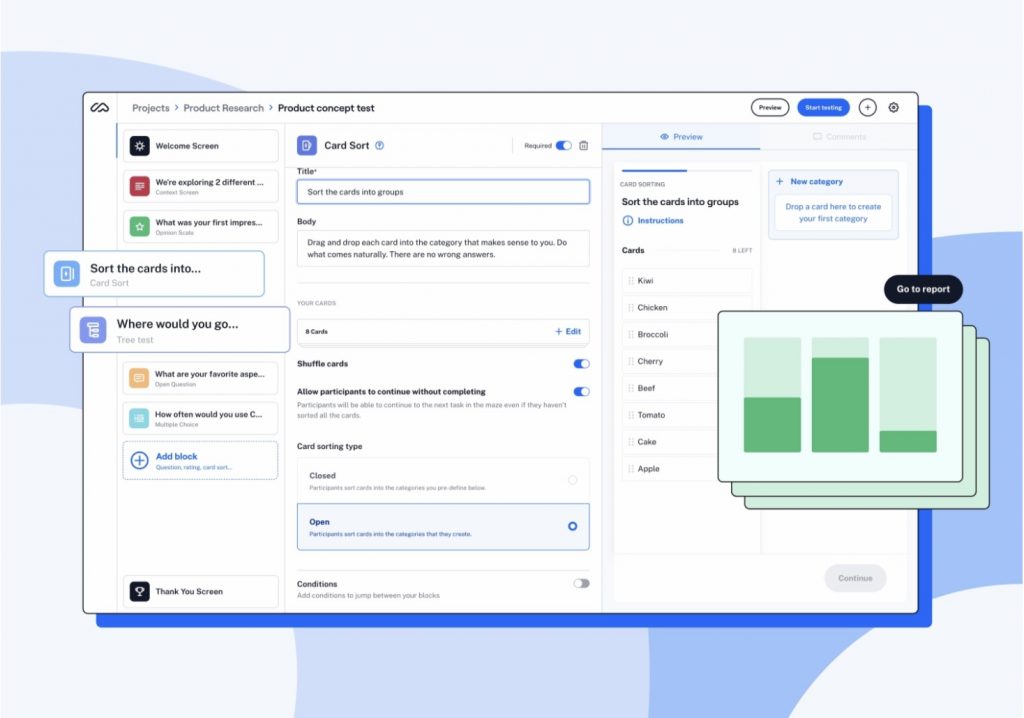
Tune in and/or read on to learn more about the founding story of Maze and discover Jonathan’s top insights on how to test, explore and validate your first product ideas as an early-stage startup:
[Listen on your favourite podcast platform here.]
Q & A with Devin and Jonathan:
Devin: How did you choose what to build?
Jonathan: The fun part of the story is that while (…) we experienced the pain firsthand, Maze actually got started in the previous startup that we launched with my co-founder Thomas. It has nothing to do with what we’re doing today. We were building a messaging app for gamers, Ping, as it was called at the time.
And the reality was we didn’t have a product yet. What we had at the time was this very in-depth InVision prototype of what we wanted to create. And so we thought, how do we get insights in our value proposition, in which flows are working, in which design is performing better, before actually having to build a thing, and not having to actually interview 12,000 people. So, what we did at the time is we hacked our way into building what would become Maze, later on, which is, we downloaded our InVision prototype. And we started putting analytics on top of everything with the idea that if we’re able to aggregate the data on the prototype and make sense of that data, we wouldn’t have to run all of these interviews.
We could collect quantitative data that we would be able to collect post-development at a pre-development stage. We pushed this Maze “V0” to 2000 people. And one hour later, we got thousands of responses. I come from a world where five responses in five weeks was basically opening champagne, and all of a sudden, we had this treasure flow of data available to us.
It was completely mind-blowing, seeing a) the data was available, but b) also that all of a sudden, the cost of iteration, didn’t include the cost of development. That all of a sudden, we had the means to iterate at a stage where we didn’t have to spend money on building something. And so that’s the long story short on the previous startup that obviously didn’t work, but it felt obvious at the time that we found something at least that we found extremely valuable and that we started Maze.
Devin: As you started to build, obviously, there were lots of micro decisions to make around the right way to prioritize and what to do next. And I know, at least when we were working together closely, InVision is where you started.
Jonathan: Especially in the early days, it feels like you want to build everything, but you really have the resources to build one thing. So, you have to basically nail down all of this discussion. And I think that it all boils down to a very simple question, which is almost what is the real thing that’s going to 10x the business in the next year to come. And so it might sound silly in the end, but the reality for us was always what is the marginal incremental change that we can make and what is the thing that’s really going to unlock for us the next stage of the mission and the vision that we’re trying to build?
Devin: One of those challenges young companies face is they have a customer in mind or maybe one or two references, but that’s a very small data set when trying to validate some big decisions. Are there any specific formulations you’ve baked into Maze since then to build that confidence or make it more objective than subjective?
Jonathan: At the 10-people team (stage), what I felt was the most useful at the time – there’s an analogy that I like to use, which is you shoot the arrow, and then you draw the target around it, which means that at the time you’re going to launch a bunch of experiments, you’re going to test a lot of things, and your vision’s really going to be redefined by what we learn to be successful.
Originally when we started Maze, we started by saying we need a better research tool for researchers, right? That was the vision. We just wanted to build something that was more efficient at the pre-development stage. And all of a sudden, we started seeing designers using the platform, and we started seeing product managers, and we started seeing product markets, and we were like, ‘there’s something there.’
So a lot of it for us was about adapting our strategy to what we were learning on the go, I think very early on, that’s more critical than anything else. It’s just, you’re going to launch things, you’re going to see pockets of things that are successful. So for us, that was things like the new customers that we were starting onboarding on the platform.
We launched a small report, which was just another way to repackage the data that we were doing, that all of a sudden was shared everywhere. So all of these things, you need to take those as signals of almost micro product market fit for some of the features that you have and try to compile all of this into your vision. It’s a very iterative process at this stage of the company.
Devin: How do you decide product market fit or feature customer fit and how do you enable your team to make those decisions independently?
Jonathan: When I talk about product, I like to start with the vision of the company first because I think it’s critical. I think product strategy is not listening to your users. Product strategy is not being a genius product strategy, just turning your company’s vision into something that’s coherent to get you to a vision.
At Maze, we want to live in a world where experiences are shaped by the people who engage with them. So what that really means is that we believe that the future is entirely user-centric and that the companies that will win will be the user-centric companies. Then the mission that we have is how do we get there. We get there by saying we empower anyone to test and learn rapidly.
That’s our mission. We want to empower anyone to test and learn rapidly. What that really means for us is that we give the tools to anyone within the product organization. To be able to run a test and to consume the results of the test to learn and then iterate.
So everything we do at Maze is just getting closer to this mission. So every year at the beginning of the year, we’ll look at the state of where we are. I like to think of the mission as kind of stairs. It’s like, you’re getting closer. You’re climbing those stairs.
Devin: If you were gonna start it all again, how would you start afresh, given all this knowledge?
Jonathan: I think the only thing that I would really do differently is to start from the vision to then build everything else. Because for us at the time, we stumbled upon success, but we didn’t really process success through a vision lens. We built the vision as a successor. The goal is to reach this mission and we can do this by validating things as we grow. Each piece is going to be validated. That changes everything because all of sudden, you sell a coherent story to people that you hire, you sell a coherent story to your investors, you sell a coherent story to people internal to your company. The goal is to reach this mission, and we can do this by validating things as we grow.
This interview has been edited for length and clarity.
Notes:
Jonathan Widawski – twitter.com/WidawskiJ
Devin Hunt – twitter.com/@hailpixel
Maze – maze.com
Seedcamp – seedcamp.com
Further reading:
A New Way to Think About Product-Market Fit
Copyright © 2019 Seedcamp
Website design × Point Studio